Your go-to guide on locating, purchasing, and using the top organic fertilizers for cannabis plants in 2022.
Cannabis Plant Cycle
Cannabis has four main stages of plant growth. It’s important to understand which cannabis nutrients and how much to provide during each step.
Step 1: Germination
The seed germination life stage can last anywhere from three to ten days. You’ll initially want to place your seeds in a dark place that is warm and humid. Once the marijuana seeds open and produce their first root, transfer them into small grow pots.
Step 2: Seedling Phase
Once you have cannabis seedlings, it should take approximately two to three weeks to complete this essential phase. You’ll begin to notice serrated leaflet production, followed by larger, bladed fan leaves. Fully developed weed plants have five to seven blades per leaf.
Step 3: Vegetative stage
Next, your marijuana plants will enter into the three to sixteen weeks known as the vegetative stage. During the vegetative growth period, the plants will need at least sixteen hours of light, or six hours of direct sunlight with several more hours of indirect sunlight. You’ll need to provide essential nutrients, water, and maintenance during most of the vegetative phase.
Final phase: Flowering
Finally, the flowering stage lasts eight to twelve weeks and is the final step to producing buds. The plants will need to be on a rotating light cycle of twelve hours of sun and twelve hours of dark during the flowering season. If you nurture cannabis plants, they should begin to produce large, resinous buds.
FAQS
Here, we answer the most frequently asked questions regarding cannabis plant nutrients and fertilizer.
What do cannabis plants need to thrive?
Cannabis plants need various nutrients and absorb them from the soil. With high-quality soil, the proper amounts of light and water, and a steady climate, weed can grow well, but fertilizer and nutrients will help them thrive and grow stronger.
How do they receive nutrients?
Cannabis plants require certain essential elements to develop into healthy plants with juicy flowers. Sunlight gives them the energy to carry out photosynthesis, which is how the plants utilize water, sunlight, CO2, and nutrients to grow.
The stomata absorb carbon dioxide, combine water in the plant cell’s chloroplasts, and convert it to marijuana plant food (glucose). Oxygen is then provided from the water that’s soaked up through the root system.
Many vitamins and minerals are carried by water and distributed around the plant to support healthy growth. Cannabis plants require vast amounts of macronutrients like potassium, nitrogen, and phosphorus and smaller quantities of micronutrients such as iron, copper, and zinc.
Plant roots take in nutrient-rich water, flowing throughout indoor and outdoor plants. Plant roots are made of complex cells called sclerenchyma cells. Micronutrients and macronutrients are distributed by water throughout each type of cell that performs its essential functions.
When to start and stop fertilizing?
Once your marijuana plants have grown at least three sets of leaves, you can begin to add organic fertilizers. The fertilization process will end two weeks prior to harvest, right after flushing your weed plants.
Harvest Preparation includes:
- checking for pests and disease
- discarding damaged plant parts
- cutting off larger fan leaves
- flushing with clean, room temperature water- this occurs two weeks before harvesting to remove excess marijuana fertilizer
- Stop fertilizing after flushing (two weeks prior to harvest)
- Discontinue watering one to three days prior to harvesting
Before you are ready for harvest, the buds have typically gotten quite dense during the last flowering phase. The trichomes will change from transparent to a milky, white color, and you’ll know it’s the optimal time to reduce the fertilizer gradually.
When one to two weeks are left before harvest time, experienced growers advise stopping providing nutrients to the cannabis plant altogether. It is believed that if fertilizer is applied through the end of plant growth, the buds will have more of an unpleasant, chemical taste.
Therefore, eliminating fertilizers earlier and flushing the roots will allow water to purify and thus enhance the flavor profile of the cannabis buds when they are ready for harvest.
When do I stop watering weed plants?
For the best crop yield, most experienced in cannabis cultivation say that you should stop watering your plants approximately three days before you’re ready to harvest. Others stop a week or so before they are prepared to harvest buds of the same strain.
The idea is to send the cannabis plants into drought mode. This controlled hydric stress will cause the entire plant to direct its resources to reproduction, resulting in larger, denser buds.
How long to stop watering before harvest time is ultimately up to you and unique to your cannabis plant and situation. The ideal time differs for bigger plants, and most climates also vary. Overall, somewhere between three days and one week seems to be the consensus.
What Is Flushing?
Flushing before you’re ready to harvest cannabis removes excess nutrient buildup from the roots and soil of your plants, giving them a fresh start. Flushing essentially allows your plants to absorb any nutrients still in the ground. You can avoid harsh and unsatisfying smoke by flushing your healthy marijuana plants before harvest.
If cannabis plants are not flushed correctly, the minerals and nutrients used during the cultivation process remain present. Flushing takes care of those nutrients and improves the overall quality of your marijuana.
However, it’s crucial to remember that flushing too early may restrict nutrients and restrain the plants from growing and flowering. Flushing too far in advance to when your cannabis plant is ready for harvest also results in discolored fan leaves.
Generally, flushing usually takes place two weeks before you harvest cannabis. Flushing should start towards the end of the flowering cycle when trichomes begin to form a milky white color. Please don’t wait until there are amber trichomes, as this is a sign that THC levels are dropping rapidly and it’s past harvest time.
Is liquid cannabis fertilizer better than dry?
There’s no difference in how they will affect your cannabis plant. Powdered fertilizers are the same as liquid, except they don’t contain added water. If you don’t mind mixing your marijuana fertilizers, powder form is a great option for growing cannabis.
How long do cannabis plants grow?
It can take anywhere from nine weeks to eight months to grow your own marijuana plant. The growth stage for the plant depends on whether you are growing weed indoors or outdoors.
Indoor space allows cannabis growers to harvest after a few weeks or months, but growing outdoors depends on natural weather and annual cycles.
Macro Nutrient
There are three main macronutrients that assist in plant growth: Nitrogen (N), Phosphorus (P), and Potassium (K)
Nitrogen
Nitrogen increases growth during the vegetative stage. Nitrogen has an atomic number of 7 and an atomic mass of approximately 14.
Phosphorus
Promotes nutrient uptake and photosynthesis. Phosphorus has an atomic number of 15 and an approximate atomic mass of 31.
Potassium
Provides energy and builds plant endurance. Potassium has an atomic number of 19 and it has an atomic mass of approximately 39.
Micro Nutrient
There are five primary micronutrients that you’ll need when growing cannabis plants: Magnesium, Manganese, Boron, Calcium, and Sulphur
Magnesium
Increases the absorption of light. It has an atomic number of 12 and an approximate mass of 24.
Manganese
Regulates chlorophyll to assist in the photosynthesis process. It has an atomic number of 25 and a mass of approximately 55.
Boron
Helps the plant to absorb calcium. It has an atomic number of 5 and a mass of 11.
Calcium
Increases cellular growth. Calcium has an atomic number of 20, and a mass of 40 approximately.
Sulfur
Promotes the production of hormones and vitamins. Sulfur has an atomic number of 16 and a mass of 32.
Types of Marijuana Fertilizer
The four best marijuana fertilizers are soil, composite, natural, and hydroponic. Each type can provide primary nutrients to grow the healthiest plants possible.
Soil
Soil has been an excellent option as a growing medium for centuries. When you grow cannabis, it’s important to choose a soil that is going to allow the plant to breathe, grow, and absorb the most nutrients possible. Read on for our top five picks for marijuana soil mix.
Composting
Compost can be added to plants from kitchen waste and other organic materials and will produce healthy, fertile soil. As well as helping your cannabis plant grow strong, composting also reduces your environmental thumbprint.
Compost can come from leftover food and waste, chicken manure, worm castings, and bone meal. After expanding your compost and regularly stirring it, it will take approximately three months to become functional.
You can also create a compost tea with organic molasses, compost, and water. It usually takes around three days to make and needs to be used within two days.
Natural Fertilizers
There are several ways to provide your plants with organic fertilizer without spending a dime.
chicken manure
Chicken manure is an excellent marijuana fertilizer. Organic slow-release chicken manure can produce higher yields and promote thriving plants.
wood ashes
Wood ashes, or even fireplace ashes, contain potassium and lime for the marijuana plant. You can simply scatter the ashes on your plants or add them to the compost. Wood ash can also be an efficient pesticide by keeping slugs and snails away.
worm castings
Worm castings come out of an earthworm once it digests organic components and is rich with microorganisms and essential nutrients. It is typically added to compost tea because adding it directly to your weed plants could result in your marijuana tasting like worm feces.
Hydroponic Fertilizer
A hydroponics setup includes a soilless growing medium, so you’ll need specialized store-bought nutrients. They won’t contain organic matter as that is provided through minerals with proper macronutrient ratios.
For marijuana specifically, you need higher nitrogen, potassium, and medium phosphorus levels during the vegetative stage. It would also help if you had higher phosphorus and potassium and lower nitrogen levels during the flowering period.
Fox Farm Trio
The Fox Farm hydro formula kit consists of three elements: Big Bloom for replenishing the root system and increasing nutrient intake, Tiger Bloom for the flowering stage, and Grow Big Hydro for greener buds. Easy-to-follow instructions are included. This trio and proper plant nutrition will ensure a successful cannabis crop.
General Hydroponics Flora Series
If your weed plants need a little extra love, the General Hydroponics Flora Series kit offers a solution for all growing stages. In addition to providing micro and macronutrients to increase yields and enhance crop quality, this popular brand improves flavor profile and aroma.
Advanced Nutrients Kit
The Advanced Nutrients trio includes Bloom, Micro, and Grow. Combined, these three fertilizers offer excellent nutrient absorption and plant growth. Advanced Nutrient’s formula includes carrier molecules to ensure plants maintain the proper nutrient ratios; little to no pH monitoring is needed. It’s the best marijuana fertilizer set for novice growers.
Botanicare Kind Trio
Seasonal hydroponic cultivators use this trio because Base is nitrogen and calcium-based, while Grow and Bloom contain the minerals and sea kelp. This weed fertilizer line offers growers a chance to play around with the nitrogen and calcium levels so it may be best suited for more experienced growers.
Canna Coco A + B & Cal-Mag
To keep those magnesium and calcium levels up, all you need is the Canna Coco A NPK Formula, as well as the B formula and Canna Cal-Mag. The Canna Coco set is designed specifically for coco coir growing methods. The formulas are high-value minerals, natural chelates, and fulvic acids for optimal nutrient absorption.
CO2 and pH balancing tips
PH levels can make a massive difference to a grower’s plant success and yield size, whether using soil, soilless or hydro methods.
- Your pH levels at the plant root play a massive role in how well your marijuana absorbs nutrients and minerals and how readily they are available.
- Monitoring pH levels should be part of your weekly plant maintenance routine, especially for hydro cultivations.
- When adjusting pH, it would be best to make adjustments slowly and gently to avoid large fluctuations that can cause stress to the plants.
Adding Carbon Dioxide to your grow room also has many benefits, including a faster-growing, more robust plant that will produce larger yields. With carbon dioxide, the rate of photosynthesis will be at a maximum, meaning they can produce carbohydrates much more quickly.
What should I know about Cannabis seeds?
Each type of cannabis seed is unique. You’ll want to know which ones you are purchasing before planting them in your cannabis garden so you can ensure they receive the correct fertilizers and nutrients during their entire life cycle.
Regular
Regular seeds are completely organic and pure. These cannabis seeds give you a 50/50 chance at either gendered plant. For example, if you plant six seeds, you’re likely to determine sex as three males and three females out of the six plants.
Feminized
Feminized seeds taken from a seed bank are extracted from treated cannabis plants and will only produce female seeds. Feminized seeds are an excellent way to ensure you grow marijuana that will form resinous buds.
Autoflowering
Autoflowering seeds produce flowering plants around two to four weeks of growth. There’s no need to be concerned with the specific growth cycles or all the nutrients required to grow a photoperiod plant with these seeds. These are great for beginner growers who don’t know a lot about growing marijuana.
Photoperiodic
Photoperiod strains are the old-school weed strains your parents smoked and are best grown outdoors. When cultivating photoperiodic weed, follow the natural rhythm of the climate, seasons, and sunlight, and you’ll be on the right track.
5 Best Soil Brands for Marijuana Plants
- Fox Farm Happy Frog Potting Soil
- Aurora Innovations Roots Organics Formula 707
- Coast of Maine Stonington Blend
- Roots Organics Original Potting Soil
- Nature’s Living Soil Organic Super Soil
What Type of Fertilizer Works Best with the Recommended Cannabis Soil?
When it comes to growing cannabis, choosing the best soil for cannabis plants is essential. A fertilizer with a balanced ratio of nitrogen, phosphorus, and potassium works best with this recommended soil. Look for a fertilizer specifically formulated for cannabis to ensure healthy and vigorous growth.
Cannabis grower tips
- Keep your growing low-key. The fewer people that know, the more discreet your operation can remain.
- Avoid over and under-watering. Manage water quality and pH.
- Choose high-quality marijuana fertilizers and avoid giving too many nutrients.
- Follow the plant’s growth cycle. Every detail matters during growth.
- Choose the suitable soil for cannabis growth.
- Pick top-quality seeds and a strain you’ll love.
- A poor climate without proper ventilation, lighting, and airflow will result in an unhealthy plant.
- Maintain an excellent infrastructure for growing cannabis.
- Don’t harvest too soon. Wait until the buds are fully formed, and flowering is complete.
- Store your weed in an air-tight container for best results.
It’s All in the Leaves
Several cannabis leaf symptoms can tell you what is wrong with your plant, including:
Underwatering– weed leaves will be limp and appear to hang; growth will slow; water more frequently or increase volume and utilize advanced nutrients until they bounce back.
Overwatering– leaves will curl down and appear rigid; they will show signs of being overly full of water, leading to root rot. Check the soil for dryness before watering to correct this issue.
Nutrient burn means you are overfeeding the plants; leaves will be brown and crispy, beginning at the tips and moving inward.
Light burn– if your grow lights are too close to the plant, your plants will turn yellow and then become brown and die. It’s best to raise your led grow lights if you notice yellowing during bud growth.
In Conclusion
When you need to use fertilizer for your marijuana plants, you must choose the right one. Learning to select the proper organic nutrients is the first step to growing the best marijuana plants. For example, planning to cultivate cannabis in the soil will have different requirements than developing plants hydroponically.
It is crucial to remember that fertilizer should not always be your first solution to fix a less-than-healthy marijuana plant. However, you should feel confident enough to add nutrients and fertilizer if you think it is a necessary step. If you’re serious about home cultivation, check out our comprehensive guide on growing weed for more information and helpful tips.

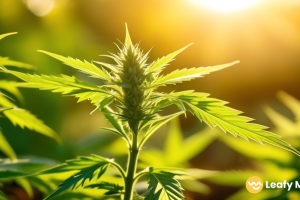
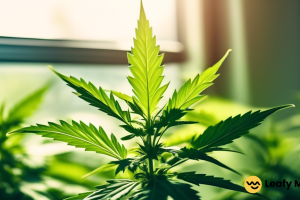
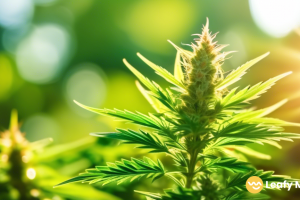




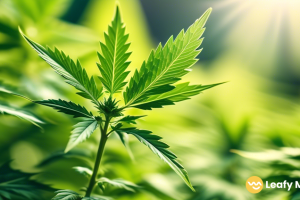
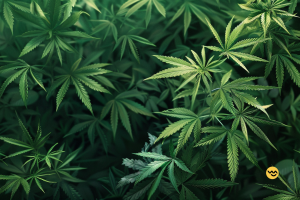
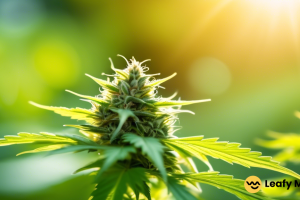
Leave a Reply